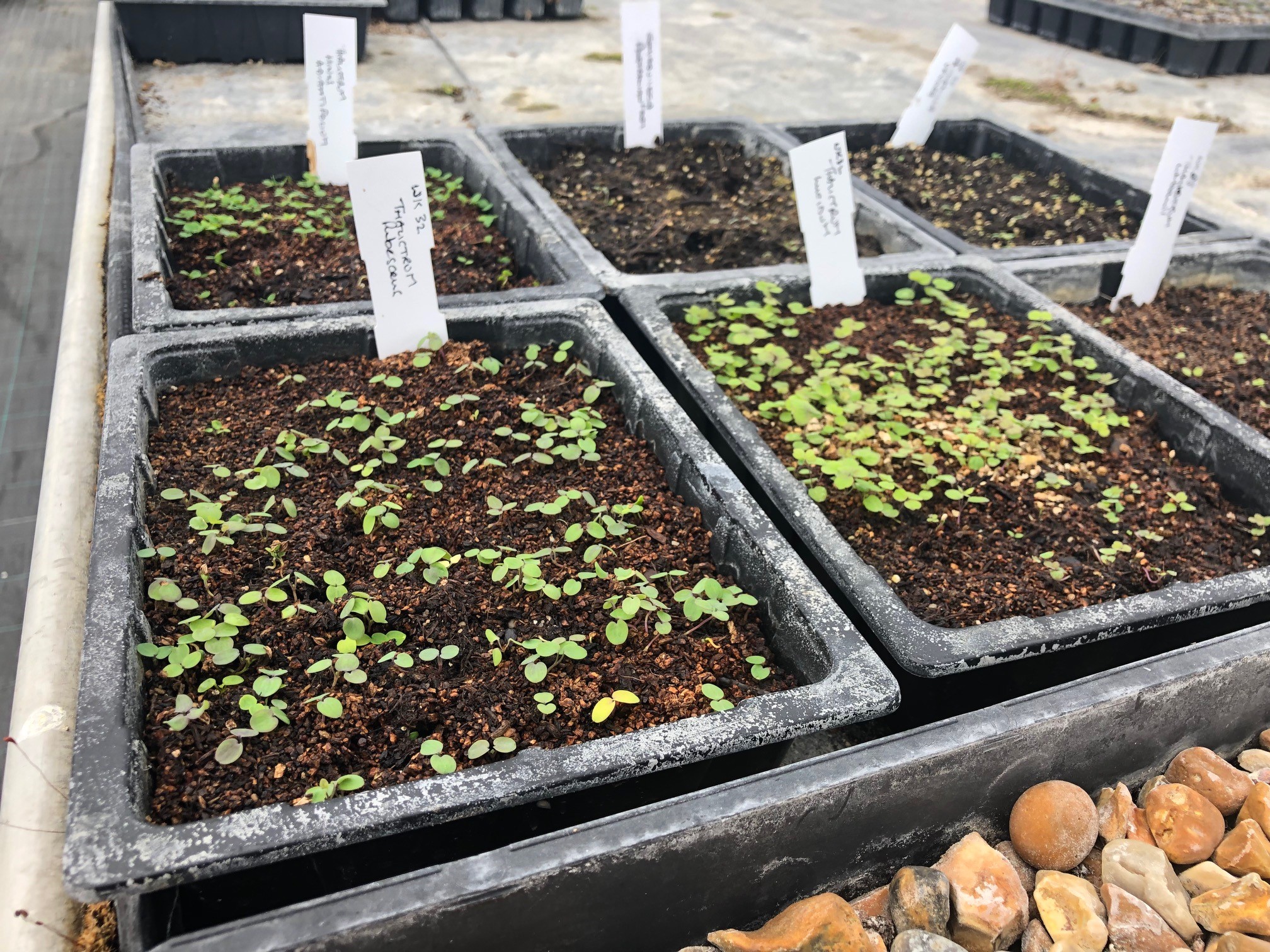Top Tips for Successful Seed Germination

Maurice, our seed propagator, has been growing plants from seed for over 42 years, initially as a market gardener producing salad and vegetables crops before joining Hardy’s in 1999 to sow annuals and perennials for the nursery. He is often to be seen walking the nursery with his bucket collecting ripe seed to grow next season’s plants.
Here are his top tips for successful germination of seeds. He says:
'Collect seed when its ripe and store in a paper bag or envelope for a few weeks to ensure it dries out properly before storing.
Remember to label bags and envelopes with the plant name and date of seed collection. I always sow seed within 12 months of it being harvested.
Learn the conditions that a particular plant seed needs to germinate and mimic them as closely as you can. My ‘GO-TO’ reference is the seed catalogue produced by Jelitto Perennial Seeds which has detailed sowing instructions. This used to be published in a paperback catalogue but is now also available online Jelitto Perennial Seed | Catalogue. Search for the plant that you wish to germinate seed for on their website and then click on the ‘Cultivation’ tab which has detailed sowing directions that you can follow at home. Some seeds can be time consuming and a little tricky to germinate as they need cold germination. Jelitto also sell a ‘Gold Nugget Seed’ range which have been pre-treated to ease germination, which it claims improves success rates.
Make sure that the seed that you are trying to germinate is not actually from a sterile cultivar. Good plants to try are those found naturally in the wild such as Thalictrum lucidum or Thalictrum flavum subsp. glaucum.
Some seeds are still difficult to collect and germinate. One that may surprise you is Alchemilla mollis which is famed for its ability to self seed but is actually difficult to collect, sow and germinate on demand. I have found it best to collect the flowers when they are brown and full of ripe seed. Cut the flowers off the stems and pile the flowers up on a small seed tray containing seed compost and place the tray under a misting unit. Then leave them so that the seed naturally drops off onto the surface of the seed compost. Do not cover with any compost as the seeds need light to germinate. After a few weeks the seedlings are ready to prick out.
From experience I have found that germinating seeds do best in a misting unit with heat from below. This ensures that the seed has access to moisture but is not overwet and does not dry out either. At home I use a propagator with several units all heated from below, allowing me to germinate a wider selection of plants simultaneously.
